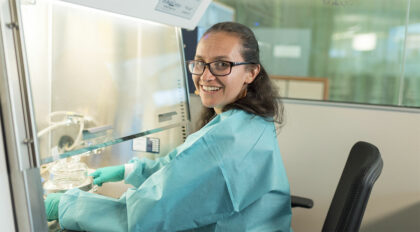In 1998, Dr. James Thomson isolated the first human embryonic stem cell, effectively ushering in a new field of scientific research. Undifferentiated cells with remarkable potential, embryonic stem cells can both proliferate without limit and become any of the differentiated cells of the body. As a research tool, human embryonic cells allow unprecedented access to the cellular components of the body, with significant applications in basic research, drug discovery and transplantation medicine.
Immediately following that initial derivation, Thomson focused his research on establishing human embryonic stem cells as an accepted, practical model system. To that end, he developed defined culture conditions, methods for genetic manipulation, and approaches for the in vitro differentiation of human embryonic stem cells to key lineages of clinical importance including blood, neural, cardiac and placental tissues.
In 2007, Thomson’s team achieved another major advance when it succeeded in reprogramming skin cells into induced pluripotent stem cells. Induced pluripotent stem cells exhibit the defining characteristics of human embryonic stem cells, but are not derived from embryos. Furthermore, the derivation of induced pluripotent cells allows for better control over the genetic makeup of the cell lines, especially in terms of deriving better in vitro models of human disease and for preventing immune rejection in transplantation therapies based on these cells. Named by Nature, Science, and Time magazines as one of the most significant advances of 2007, induced pluripotent stem cells continue to capture the imagination of the scientific community, leaving little doubt that these cells will quickly expand the impact of human pluripotent stem cell research.
Thomson’s regenerative biology laboratory at the Morgridge Institute for Research is now seeking to understand how a cell can maintain or change identity, how a cell chooses between self-renewal and the initial decision to differentiate and how a differentiated cell with limited developmental potential can be reprogrammed to a pluripotent cell. By coaxing, directing and tweaking human pluripotent cells, scientists in Thomson’s lab work to create physiologically stable, safe and functional cells to repair or replace diseased cells in humans. With each experiment, Thomson’s group moves closer to making regenerative medicine a reality and achieving the remarkable potential of human pluripotent stem cells.



